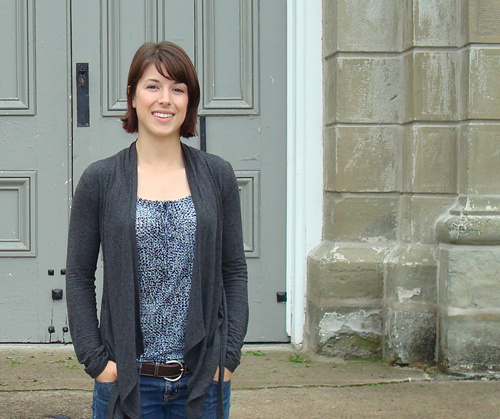
When she was an undergrad, history PhD student Nicki Darbyson worked at the former jail in Goderich, which had been converted into a museum. It was in that jail that 14-year-old Steven Truscott was held when he was arrested back in 1959 for the murder of 12-year-old Lynne Harper. “It was a story I grew up with,” says Darbyson. Her hometown of Goderich is just twenty minutes away from the town of Clinton, where Truscott had lived 30 years earlier.
Feelings about the case were still strong in the community, she says. While most now accept Truscott’s innocence, Darbyson says some local residents who were convinced of his guilt in 1959 still feel there is no evidence to exonerate him.
With this background, it’s perhaps not surprising that Darbyson opted to do her master’s thesis on the movement to abolish the death penalty in Canada and how this intersected with the issues surrounding the Steven Truscott case. A paper based on her research − “Sadists and Softies: Gender and the Abolition of the Death Penalty in Canada, A Case Study of Steven Truscott 1959-1976” − has been published in Ontario History, Spring 2011.
“Truscott’s case was important to those in favour of abolishing the death penalty for two reasons: because it seemed that he might well be innocent, and because he was so young,” says Darbyson. After Truscott’s trial in 1959, he was sentenced to death by hanging. This was later commuted to life in prison, but he was actually released on parole 10 years later and moved to Guelph.
Truscott’s trial and sentencing were just the beginning of the story. In 1966, Isabel Le Bourdais wrote a book called The Trial of Steven Truscott that outlined mistakes made in the investigation and trial and made the case that Truscott was likely innocent. “Le Bourdais became interested in the case because she had a 14-year-old son herself, Darbyson explains. “But once she started investigating, she found a lot of faults in the trial process and strongly suggested that Steven was innocent.”
The book was widely read in Canada and changed many minds on this case. Not the Supreme Court, though, which refused to hear an appeal until 2007, when Truscott was at last declared not guilty of the crime.
“Many of Truscott’s supporters were also mixed in with the capital punishment debate,” says Darbyson. In her paper, she discusses how the movement to abolish capital punishment was part of a larger trend to diagnose and fix societal problems such as poverty and crime. The focus was more on rehabilitating criminals than punishing them. Unfortunately, Darbyson says the psychologists working in the prison system at the time “relied on experimental drugs and therapies. They even had Steven Truscott take LSD as a truth serum, hoping to find out if he’d committed the crime or not. Truscott was still a teenager at the time.”
Another aspect that intrigued Darbyson was the gendered language used to describe those who supported and those who rejected capital punishment. Those opposed, whether men or women, were often described as weak, soft on crime, overly emotional and easily influenced − all stereotypically feminine traits. Those who supported the death penalty were tough on crime. (Interestingly, Truscott was convicted by an all-male jury.)
“This language is used to marginalize people,” says Darbyson. “I think it shows that we’re not really past this in our society, because similar words are still used.” The door to the death penalty debate may not be completely closed either: Prime Minister Stephen Harper raised it in 2008 when he said he was opposed to requesting clemency for Canadians facing this punishment for crimes committed in the United States. He’s also stated that he is personally in favour of the death penalty.
Darbyson, on the other hand, is firmly opposed. “There’s no margin for error with capital punishment. The judicial process is only as objective as the people involved, and nobody can really be completely objective. I’m against capital punishment because of the finality of it, but I’m not sure the system we have right now is ideal either; there are lots of problems with the justice and prison systems.”